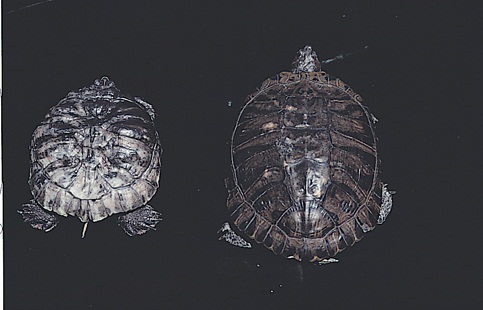Difference between revisions of "Reptiles and Amphibians Q&A 12"
| Line 1: | Line 1: | ||
| − | |||
| − | |||
| − | |||
| − | |||
[[File:Rep 12.jpg|centre|500px]] | [[File:Rep 12.jpg|centre|500px]] | ||
Revision as of 13:45, 28 October 2011
These two three-yearold female red-eared slider turtles are being kept under different captive husbandry conditions. The turtle on the right is normal.
| Question | Answer | Article | |
| What is your diagnosis of the turtle on the left? | Metabolic bone disease. |
Link to Article | |
| What poor techniques of captive management might be the cause of this turtle’s disorder? | A diet rich in phosphorus and low in calcium; hypovitaminosis D3; and lack of exposure to unfiltered sunlight or full-spectrum ultraviolet light can cause metabolic bone disease. |
Link to Article | |
| How is this condition treated? | Change to a more natural high-calcium, moderate-phosphorus diet that contains bony tissue, eg, live fish or commercial floating turtle chow, and calcium-rich leafy vegetation and algae. If deemed appropriate, calcium lactate or gluconate can be administered orally or parenterally (1.0–2.5mg/kg daily). Although the bony carapace and plastron will eventually become remineralised when the turtle’s diet is improved, the deformities are likely to remain apparent for the life of the turtle. |
Link to Article | |
